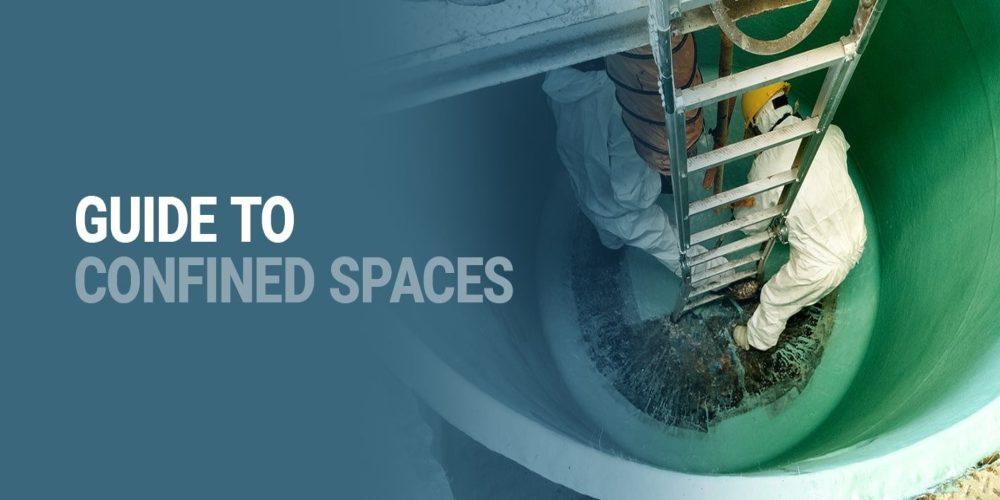Information
A Guide To Confined Space Training

Safety in the workplace is of paramount importance. Every employee deserves a safe and healthy work environment, and it is the responsibility of employers to ensure that this is the case. Employees who feel safe and secure in their workplace are more likely to be engaged and productive. Employers prioritizing safety can create a positive work culture promoting employee satisfaction.
Employers have a responsibility to provide their employees with proper training. Training is crucial for employees to effectively perform their duties, work safely, and contribute to the organization’s success. One kind of specialized training is confined space training.
This article will discuss what confined spaces are, the basics for confined space training, and why it is important for employees.
Table of Contents
What Are Confined Spaces?
Restricted spaces are places with few or restricted entry or exit options not intended for ongoing human habitation. These are often enclosed or partially enclosed spaces that present a danger to people’s health and safety because they could contain dangerous situations.
Tanks, silos, sewers, tunnels, and storage bins are examples of confined spaces that can be found in various environments, from industrial sites to residential buildings. Governmental institutions and business organizations have implemented stringent policies and rules to guarantee the security of employees accessing confined locations.
These guidelines usually require that employers identify and evaluate all confined spaces in their workplace. They may also include providing adequate training and protective equipment, using atmospheric monitoring equipment to detect hazardous gasses, and implementing a permit system to ensure that only trained and authorized workers are allowed to enter the space.
What Is Confined Space Training?
Confined space training is workplace safety training designed to educate workers on the risks of working in confined spaces. It gives them the knowledge and skills they need to perform their duties safely and effectively. The purpose of confined space training is to ensure that workers required to enter these spaces know the potential hazards.
One of the key components of confined space training is hazard identification and risk assessment. It involves identifying the potential hazards within a confined space, such as toxic gasses, the risk of fire or explosion, the potential for engulfment or entrapment, and moving machinery or equipment.
Basics Of Confined Space Training
Understanding what a confined space constitutes is the initial step in confined space training. A restricted area has few options for entry and exit, is not intended for continuous occupation, and is big enough for an employee to enter and do their work.
After a limited location has been located, employees must evaluate the hazards it poses. Lack of oxygen, hazardous fumes, and flammable materials are a few dangers that could exist in a restricted environment. Employees also need to be aware of the dangers posed by the items they use, such as power tools, welding equipment, and generators.
During confined space training, workers must learn to use the appropriate safety gear, such as harnesses, lifelines, and breathing protection. Also, they need to learn how to properly ventilate a small room so that enough oxygen is present and harmful gasses are removed.
Finally, employees must practice responding to emergencies throughout their training in confined spaces. Students must know how to give first aid, call for help, and swiftly and safely leave the area.
Benefits Of Training
First and foremost, training aids in avoiding mishaps and injuries. Working in confined areas can be risky since there are several potential dangers, including low oxygen levels, toxic chemicals, and explosive items.
Second, it can aid in raising productivity. Employees with the right training are more assured and effective when working in restricted places.
Third, training improves staff morale. Employees are more likely to be satisfied with their jobs and are less susceptible to stress or anxiety if they feel safe and confident in their abilities.
Finally, confined space training can aid in preventing legal liability. Employers are legally responsible for providing a safe working environment for their employees. Failure to do so can result in legal action and costly fines.
Achieve Safety In The Workplace
Employers are responsible for ensuring staff members have received the necessary training to recognize, assess, and manage confined space hazards. Through thorough training programs, workers can acquire the abilities and information required to perform safely in these environments, reducing the risk of accidents and injuries.
Read more – Training In Health And Social Care

-

 Business3 years ago
Business3 years agoHow to Do Long-Distance Moves with Children
-

 Travel2 years ago
Travel2 years agoQuick Guide: Moving To Santa Rosa?
-

 Real Estate3 years ago
Real Estate3 years agoWhy Dubai Festival City is a Great Neighbourhood for Young Learners
-

 Business3 years ago
Business3 years agoIs Guest Posting a Good Inbound Marketing Strategy?
-

 Business1 year ago
Business1 year agoThe Ultimate Guide To Thriving In Your Printing Franchise
-

 Business1 year ago
Business1 year agoExploring The Benefits And Challenges Of Restaurant Franchising
-

 Tech3 years ago
Tech3 years agoCyber Table That Will Change Your Life
-

 Lifestyle1 year ago
Lifestyle1 year agoDallas’ Hidden Gems: 6 Must-Try Restaurants Off The Beaten Path!









Recent Comments